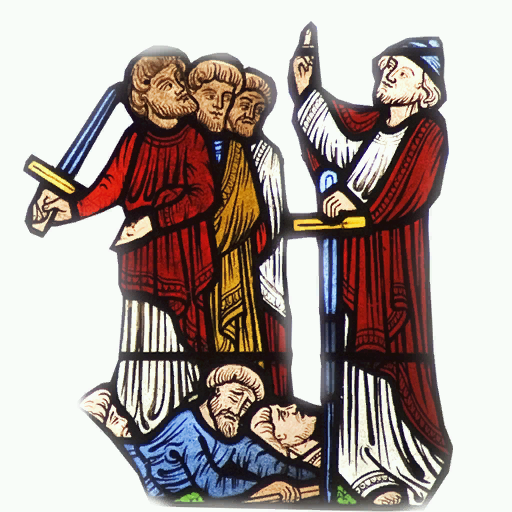

Based on the similarity between Baβri and Old Persian Bābiru ( Babylon), later Zoroastrians localized Aži Dahāka in Mesopotamia, though the identification is open to doubt.

In the Avesta, Aži Dahāka is said to have lived in the inaccessible fortress of Kuuirinta in the land of Baβri, where he worshipped the yazatas Arədvī Sūrā ( Anāhitā), divinity of the rivers, and Vayu, divinity of the storm-wind.

His mother is Wadag (or Ōdag), herself described as a great sinner, who committed incest with her son. The name Dahāg (Dahāka) is punningly interpreted as meaning "having ten ( dah) sins". In a post-Avestan Zoroastrian text, the Dēnkard, Aži Dahāka is possessed of all possible sins and evil counsels, the opposite of the good king Jam (or Jamshid). Īži Dahāka appears in several of the Avestan myths and is mentioned parenthetically in many more places in Zoroastrian literature. In other respects Aži Dahāka has human qualities, and is never a mere animal. He is described as a monster with three mouths, six eyes, and three heads, cunning, strong, and demonic. The Azhdarchid group of pterosaurs are named from a Persian word for " dragon" that ultimately comes from Aži Dahāka.Īži Dahāka (Dahāg) in Zoroastrian literature Īži Dahāka is the most significant and long-lasting of the ažis of the Avesta, the earliest religious texts of Zoroastrianism. ĭespite the negative aspect of Aži Dahāka in mythology, dragons have been used on some banners of war throughout the history of Iranian peoples. The name also migrated to Eastern Europe, assumed the form " azhdaja" and the meaning "dragon", "dragoness" or "water snake" in Balkanic and Slavic languages. The Avestan term Aži Dahāka and the Middle Persian azdahāg are the source of the Middle Persian Manichaean demon of greed Az, Old Armenian mythological figure Aždahak, Modern Persian ' aždehâ/ aždahâ', Tajik Persian ' azhdahâ', Urdu ' azhdahā' (اژدها), as well as the Kurdish ejdîha (ئەژدیها) which usually mean "dragon". In Persian mythology, Dahāka is treated as a proper noun, and is the source of the Ḍaḥḥāk (Zahhāk) of the Shāhnāme.
Khotanese daha), "huge" or "foreign" (cf. Sanskrit dahana), "man" or "manlike" (cf. Among the meanings suggested are "stinging" (source uncertain), "burning" (cf. The original meaning of dahāka is uncertain. 7 The Aži/Ahi in Indo-Iranian traditionĪži (nominative ažiš) is the Avestan word for "serpent" or "dragon." It is cognate to the Vedic Sanskrit word ahi, "snake," and without a sinister implication.2 Aži Dahāka (Dahāg) in Zoroastrian literature.


 0 kommentar(er)
0 kommentar(er)
